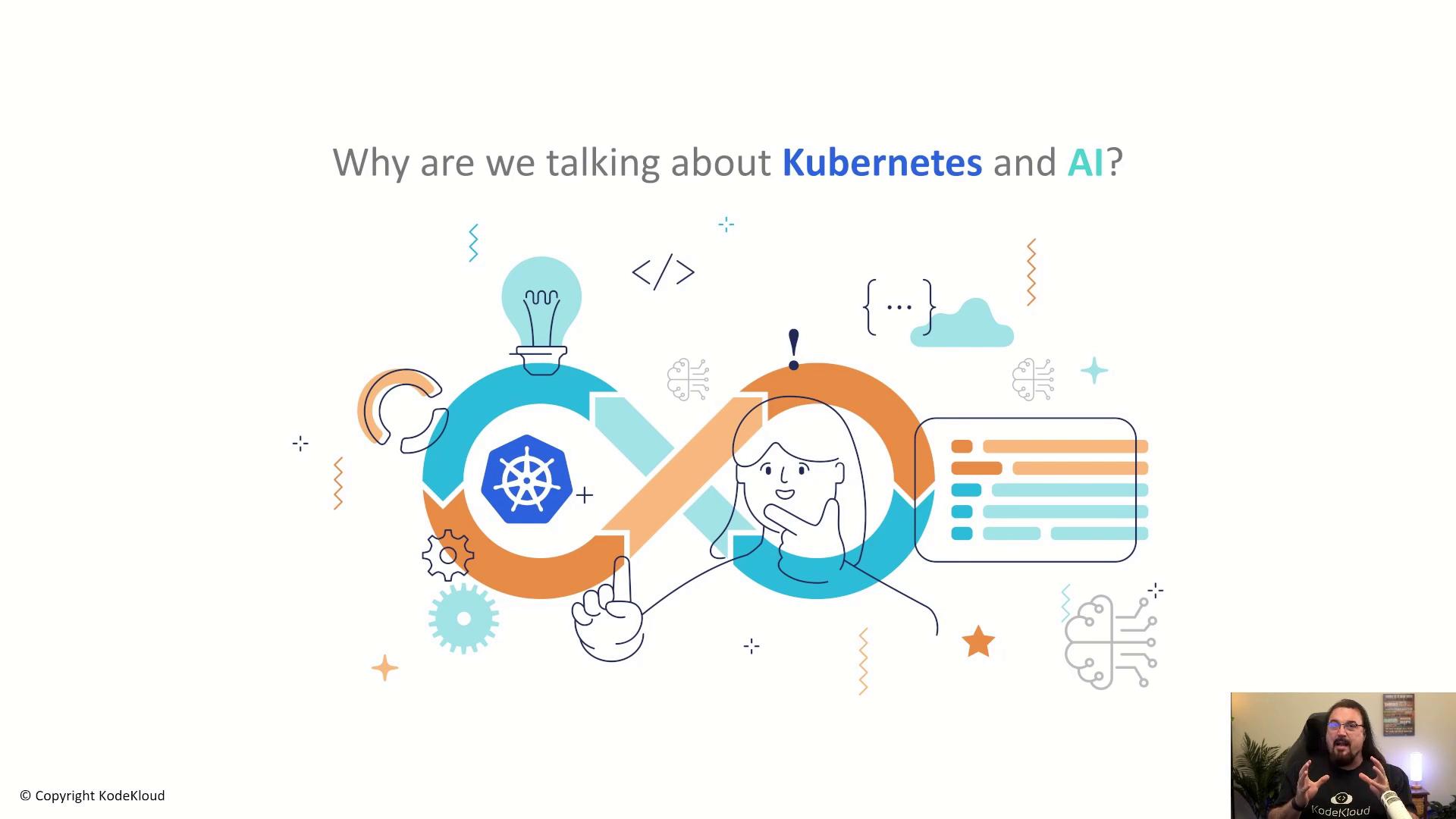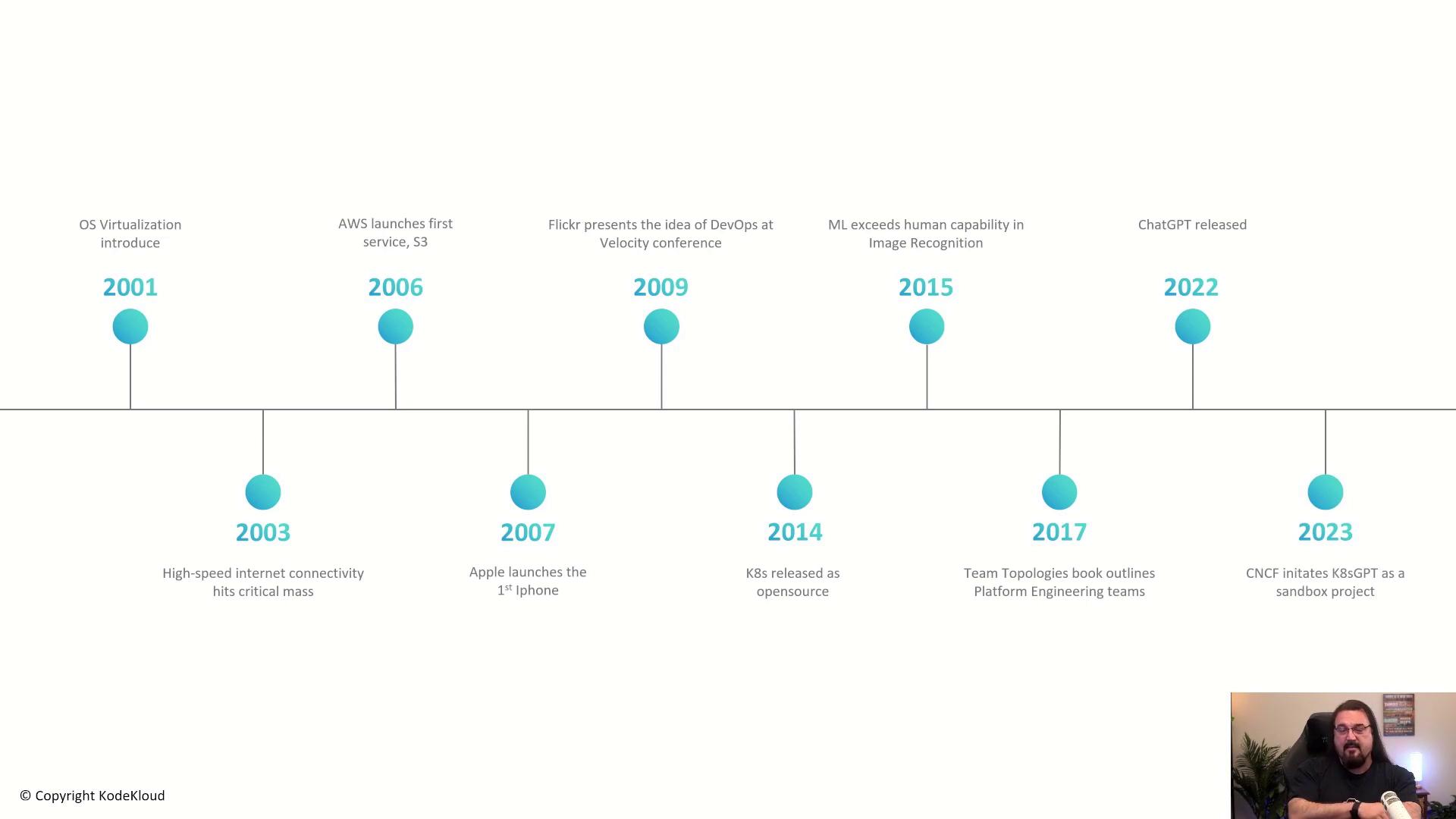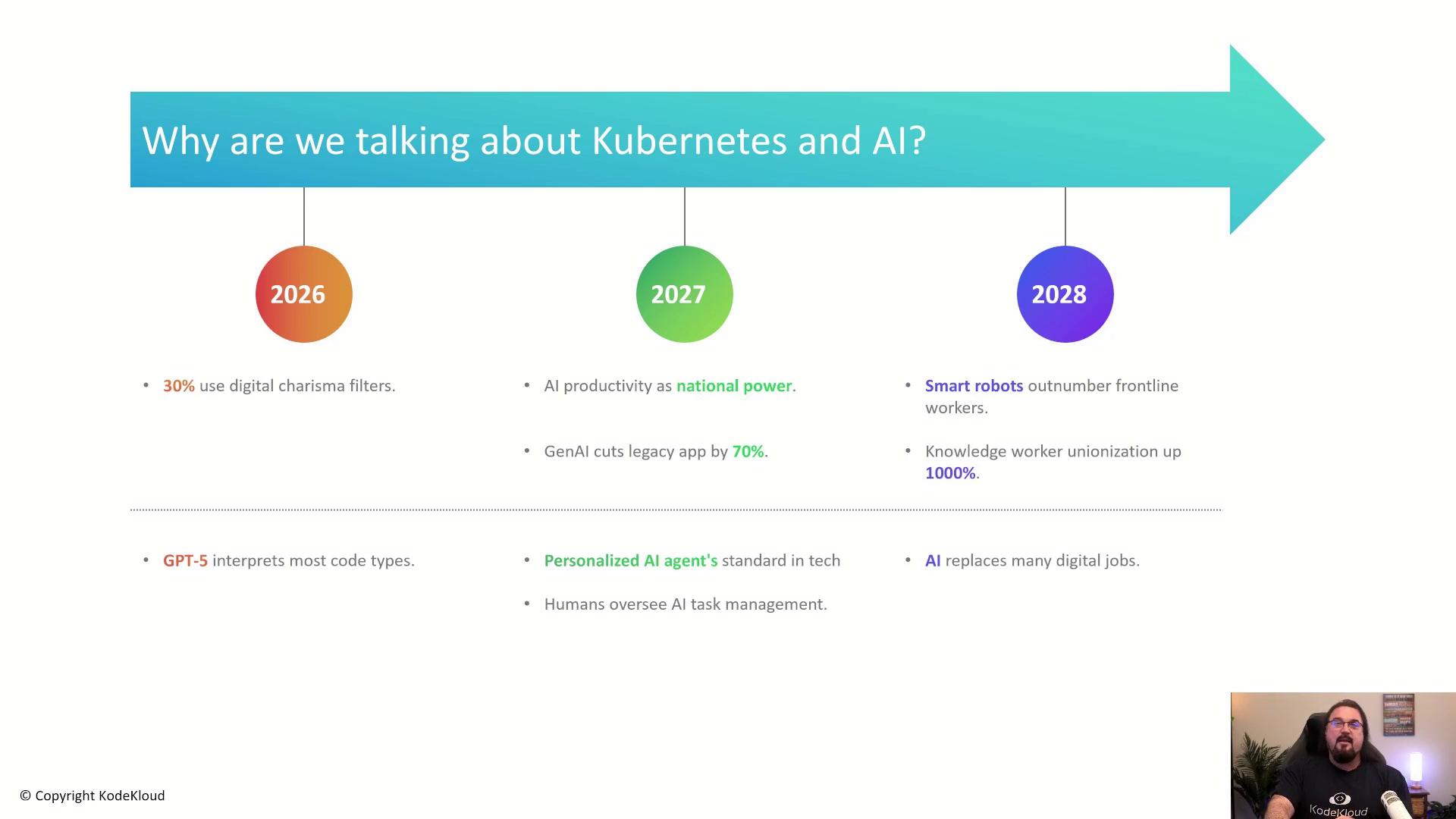Introduction to K8sGPT and AI-Driven Kubernetes Engineering
The AI Revolution in Kubernetes and DevOps
Historical Context of DevOps and AI Evolution
Welcome future AI engineers and DevOps professionals! I’m Michael Forrester. In this lesson, we explore K8sGPT and the rise of AI agents in Kubernetes engineering. Learn how AI will act as a force multiplier in cloud-native workflows—streamlining provisioning, diagnostics, and continuous delivery—and what future landscapes operations-focused engineers should anticipate.
Note
According to a CNCF report, AI empowers operations and development teams to work smarter and faster—boosting speed and quality while reducing effort in testing and troubleshooting.
Why focus on Kubernetes and AI? Kubernetes offers a well-bounded yet complex platform that lets us explore AI-driven tooling in a realistic cloud-native environment. Below is an illustration of this intersection:

With this foundation, you’ll be inspired and better equipped to navigate the evolving roles in Kubernetes and AI-driven DevOps.
Technology Timeline: 2001–2023
Review these key milestones to understand the evolution from virtualization to AI-enhanced cloud-native engineering:
| Year | Milestone |
|---|---|
| 2001 | VMware debuts ESX Server, pioneering OS virtualization and treating operating systems as software artifacts. |
| 2003 | Widespread adoption of DSL offers faster, affordable internet access compared to dial-up. |
| 2006 | AWS launches S3 (March) and EC2 (August), paving the way for RDS (2009), IAM (2011), and DynamoDB (2012). |
| 2007 | Apple releases the first iPhone; Android follows with its US debut in 2008. |
| 2009 | At O’Reilly’s Velocity Conference, Flickr introduces the DevOps concept; Patrick Debois later formalizes it with #DevOpsDays. |
| 2013 | Docker simplifies container creation, distribution, and management. |
| 2014 | Kubernetes is open-sourced and quickly becomes the leading container orchestrator. |
| 2015 | Machine learning surpasses 95% human consistency in ImageNet image recognition. |
| 2019 | Team Topologies defines platform engineering, emphasizing internal developer platforms and “paved roads.” |
| Late 2022 | ChatGPT launches, igniting mainstream interest in generative AI. |
| Dec 2023 | CNCF adopts K8sGPT as a sandbox project, cementing the Kubernetes–AI intersection. |

Kubernetes was the last major innovation reshaping software deployment, and AI is the next seismic shift—forming a powerful synergy for the future of operations.
Future Projections: 2026–2028
Anticipate these AI-driven trends in Kubernetes and DevOps:
• 2026 – Real-time Digital Charisma Filters (DeepFakes) correct visual and audio presentation issues during virtual meetings.
• 2026 – Launch of GPT-5 delivers advanced code interpretation, automated test generation, and reflective analysis.
• 2027 – AI-driven productivity becomes a national competitiveness metric; generative AI reduces legacy app modernization effort by up to 70%.
• 2028 – Autonomous agents and robotics dominate retail, manufacturing, and logistics, driving new dynamics in knowledge worker organization.
• Beyond – Personalized AI assistants become standard partners for provisioning, architecture research, and documentation, under human ethical oversight.

Warning
AI tools should operate under human oversight to ensure ethical compliance, unbiased decision-making, and security best practices.
AI will reshape DevOps roles and spawn new specialties—just as cloud and Kubernetes did. By focusing on Kubernetes and AI, you’ll be ready to lead in this emerging landscape.
Links and References
Watch Video
Watch video content